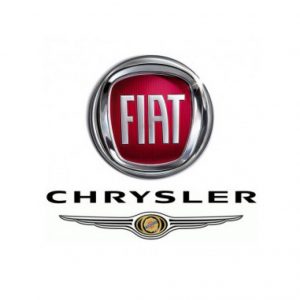 Fiat Chrysler (NYSE:FCAU) has partnered with Alphabet’s Google (NASDAQ:GOOG) to build a new in-car infotainment system. The companies announced the partnership just ahead of the beginning of CES, the annual consumer electronics show in Las Vegas. The new system is a combination of FCA’s UConnect infotainment system and Android 7.0 Nougat, released in 2016. It will be on display in a Chrysler 300 sedan at CES this week.
Fiat Chrysler (NYSE:FCAU) has partnered with Alphabet’s Google (NASDAQ:GOOG) to build a new in-car infotainment system. The companies announced the partnership just ahead of the beginning of CES, the annual consumer electronics show in Las Vegas. The new system is a combination of FCA’s UConnect infotainment system and Android 7.0 Nougat, released in 2016. It will be on display in a Chrysler 300 sedan at CES this week.
The new infotainment system operates a range of features, including HVAC, navigation, AM/FM, media streaming, Bluetooth calling and media streaming, multi-channel audio, and digital instrument clusters. The system also supports a number of apps like Google Assistant and Maps, as well as other Android apps like Pandora and Spotify.
Google wants Android integrated into every user-facing system in the car, from climate control and audio controls to the speedometer. In a press release announcing the news, Patrick Brady, Director of Android Engineering, said, “Google is committed to building Android as a turn-key automotive platform that integrates deeply with the vehicle in a safe and seamless way.”
Chris Barman, FCA’s head of electrical engineering, said in a statement, “With Android, we are able to maintain our unique and intuitive Uconnect user interface, all while integrating our easy-to-use systems with Android’s features and ecosystem of applications.” Neither FCA nor Google has announced when the platform will be available in dealer showrooms.
Google’ work with FCA is different than the Android Auto model. Android Auto is an in-car software platform that brings the functionality and feel of a smartphone to the vehicle’s central screen. It’s not an operating system; it’s a layer that sits on top of the operating system. At its 2016 I/O developer conference, Google released a version of Android Auto that would run directly on a phone.
Apple is also seeking to integrate its mobile products in car systems via CarPlay. However, Apple maintains way more control over the look and feel of the interface.
